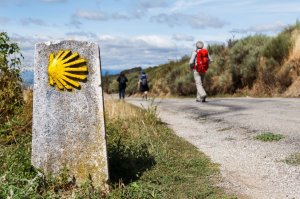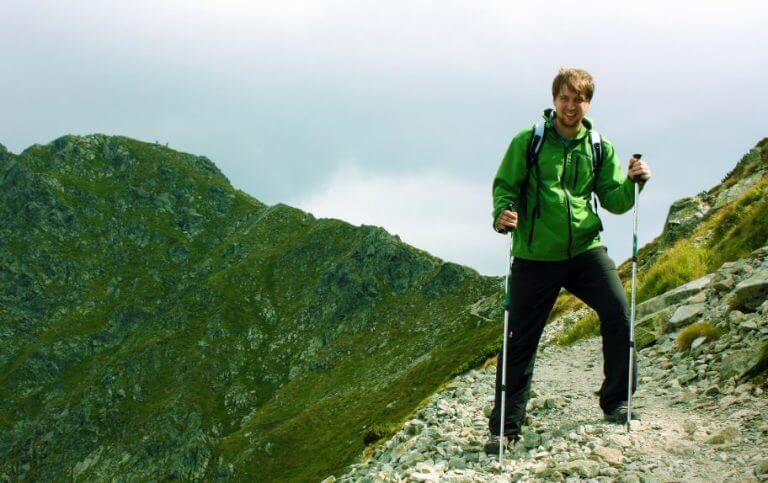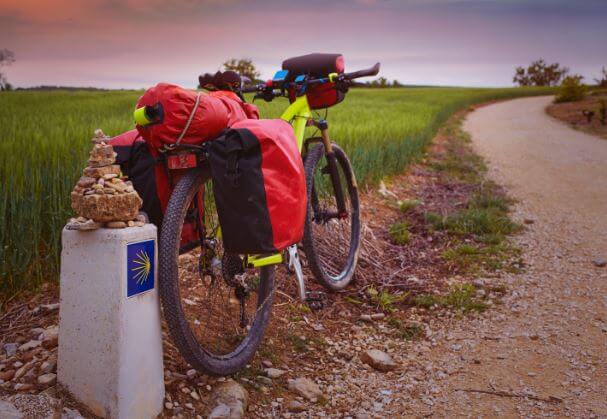What Do You Need to Hike El Camino de Santiago?

Together with Jerusalem and Rome, El Camino de Santiago is one of the great pilgrimages of Christianity. Besides everything that it represents on a spiritual level, it’s also a touristic, cultural and athletic activity. Year after year, it attracts pilgrims and tourists alike, from all over the world. But, what do you need to hike the Camino de Santiago?
El Camino de Santiago: geographic area
The most popular place to begin this pilgrimage is the Camino Frances (French trail). Its departure point is in Roncesvalles, in an area called Comunidad Foral de Navarra.
Located in Saint Jean Pied de Port, France, the entire route is a total distance of 452 miles. The trail ends in Santiago de Compostela, Spain.
A popular section for pilgrims to hike is El Camino del Norte or El Camino de la Costa. This section runs parallel to Camino Frances, alongside the coast of the Cantabrian Sea.

It’s important to remember that when you hike El Camino de Santiago, you’ll encounter some rough terrain, so you’ll need to use the correct equipment.
Everything you need to hike the Camino de Santiago
Whatever your reasons for wanting to hike the Camino de Santiago, you need to have plenty of determination. You also need to plan your route in the best way possible and keep in mind how much time you have available to complete the walk.
The trek through the French section, from the border to the Templo del Jacobino, takes 31 days. This is without planning for any unforeseen setbacks and if the weather conditions are favorable.
The best time to hike
You can complete this walk any time of the year, evaluating the advantages and difficulties of each season. July is the busiest time of the year, which can create problems when looking for a place to spend the night.
Prepare yourself physically and mentally
The trek is an undertaking for almost anyone. For those who don’t frequently perform any physical exercise, it can cause some difficulties.
A hiker can receive La Compostela, a diploma awarded by ecclesiastical authorities to certify completion of the trail. To be eligible for this award, you must walk the last 62 miles of the route and if you’re traveling on a horse or bicycle, you need to travel for at least 124 miles.

It’s interesting to know that you can also complete El Camino de Santiago on a horse or a bicycle!
Basic equipment
When preparing the equipment you’ll need to walk El Camino de Santiago, you need to follow one rule: travel lightly. Many hikers end up abandoning the adventure and some have to contract additional services that will haul supplies when there is too much weight to carry.
The essential items are the following:
- A backpack with a 20-liter capacity. If you’re traveling in winter, you will need to have 20 additional liters of space available to include warm clothing for cold temperatures. The maximum weight to carry should not exceed more than 22 pounds or 25 pounds in cold weather.
- Hiking shoes or boots, and other comfortable shoes or slippers for relaxing when not on the trail.
- Two shirts for the trail and an additional one for resting. Three pairs of shorts during hotter months, and long pants for the winter. In addition, two sets of underwear and socks, preferably without seams.
- A hat and a light jacket. During the winter, a cap, scarf, and gloves are essential.
- Sleeping bag and a small sleeping mat in case you are sleeping outdoors or on the floor.
Hygiene and toiletries
Keeping the same theme of traveling as lightly as possible, toiletries should be scaled down in size. Basic hygiene products that you’ll need are liquid soap, (that can also be used for shampoo) tissues, toilet paper, and a towel.
Don’t forget to include sunblock too. Equally important is a small first-aid-kit with gauze, surgical tape, scissors, tweezers, and antiseptic, such as betadine and an analgesic such as paracetamol.
Sleeping
Throughout most parts of the trail, there are hostels for overnight stays. These are places that are provided by the government, archdioceses and neighborhood associations.
Many of these premises are free or their prices are very economical at most around $13 per night. Each one has its individual characteristics, rules and services, such as a laundry, kitchen and showers.
Although slightly more expensive, there is private lodging available too at around $21 per night. You can also reserve a hotel room with all services, however, his option may spoil the classic spirit of the pilgrim.
Together with Jerusalem and Rome, El Camino de Santiago is one of the great pilgrimages of Christianity. Besides everything that it represents on a spiritual level, it’s also a touristic, cultural and athletic activity. Year after year, it attracts pilgrims and tourists alike, from all over the world. But, what do you need to hike the Camino de Santiago?
El Camino de Santiago: geographic area
The most popular place to begin this pilgrimage is the Camino Frances (French trail). Its departure point is in Roncesvalles, in an area called Comunidad Foral de Navarra.
Located in Saint Jean Pied de Port, France, the entire route is a total distance of 452 miles. The trail ends in Santiago de Compostela, Spain.
A popular section for pilgrims to hike is El Camino del Norte or El Camino de la Costa. This section runs parallel to Camino Frances, alongside the coast of the Cantabrian Sea.

It’s important to remember that when you hike El Camino de Santiago, you’ll encounter some rough terrain, so you’ll need to use the correct equipment.
Everything you need to hike the Camino de Santiago
Whatever your reasons for wanting to hike the Camino de Santiago, you need to have plenty of determination. You also need to plan your route in the best way possible and keep in mind how much time you have available to complete the walk.
The trek through the French section, from the border to the Templo del Jacobino, takes 31 days. This is without planning for any unforeseen setbacks and if the weather conditions are favorable.
The best time to hike
You can complete this walk any time of the year, evaluating the advantages and difficulties of each season. July is the busiest time of the year, which can create problems when looking for a place to spend the night.
Prepare yourself physically and mentally
The trek is an undertaking for almost anyone. For those who don’t frequently perform any physical exercise, it can cause some difficulties.
A hiker can receive La Compostela, a diploma awarded by ecclesiastical authorities to certify completion of the trail. To be eligible for this award, you must walk the last 62 miles of the route and if you’re traveling on a horse or bicycle, you need to travel for at least 124 miles.

It’s interesting to know that you can also complete El Camino de Santiago on a horse or a bicycle!
Basic equipment
When preparing the equipment you’ll need to walk El Camino de Santiago, you need to follow one rule: travel lightly. Many hikers end up abandoning the adventure and some have to contract additional services that will haul supplies when there is too much weight to carry.
The essential items are the following:
- A backpack with a 20-liter capacity. If you’re traveling in winter, you will need to have 20 additional liters of space available to include warm clothing for cold temperatures. The maximum weight to carry should not exceed more than 22 pounds or 25 pounds in cold weather.
- Hiking shoes or boots, and other comfortable shoes or slippers for relaxing when not on the trail.
- Two shirts for the trail and an additional one for resting. Three pairs of shorts during hotter months, and long pants for the winter. In addition, two sets of underwear and socks, preferably without seams.
- A hat and a light jacket. During the winter, a cap, scarf, and gloves are essential.
- Sleeping bag and a small sleeping mat in case you are sleeping outdoors or on the floor.
Hygiene and toiletries
Keeping the same theme of traveling as lightly as possible, toiletries should be scaled down in size. Basic hygiene products that you’ll need are liquid soap, (that can also be used for shampoo) tissues, toilet paper, and a towel.
Don’t forget to include sunblock too. Equally important is a small first-aid-kit with gauze, surgical tape, scissors, tweezers, and antiseptic, such as betadine and an analgesic such as paracetamol.
Sleeping
Throughout most parts of the trail, there are hostels for overnight stays. These are places that are provided by the government, archdioceses and neighborhood associations.
Many of these premises are free or their prices are very economical at most around $13 per night. Each one has its individual characteristics, rules and services, such as a laundry, kitchen and showers.
Although slightly more expensive, there is private lodging available too at around $21 per night. You can also reserve a hotel room with all services, however, his option may spoil the classic spirit of the pilgrim.
This text is provided for informational purposes only and does not replace consultation with a professional. If in doubt, consult your specialist.








